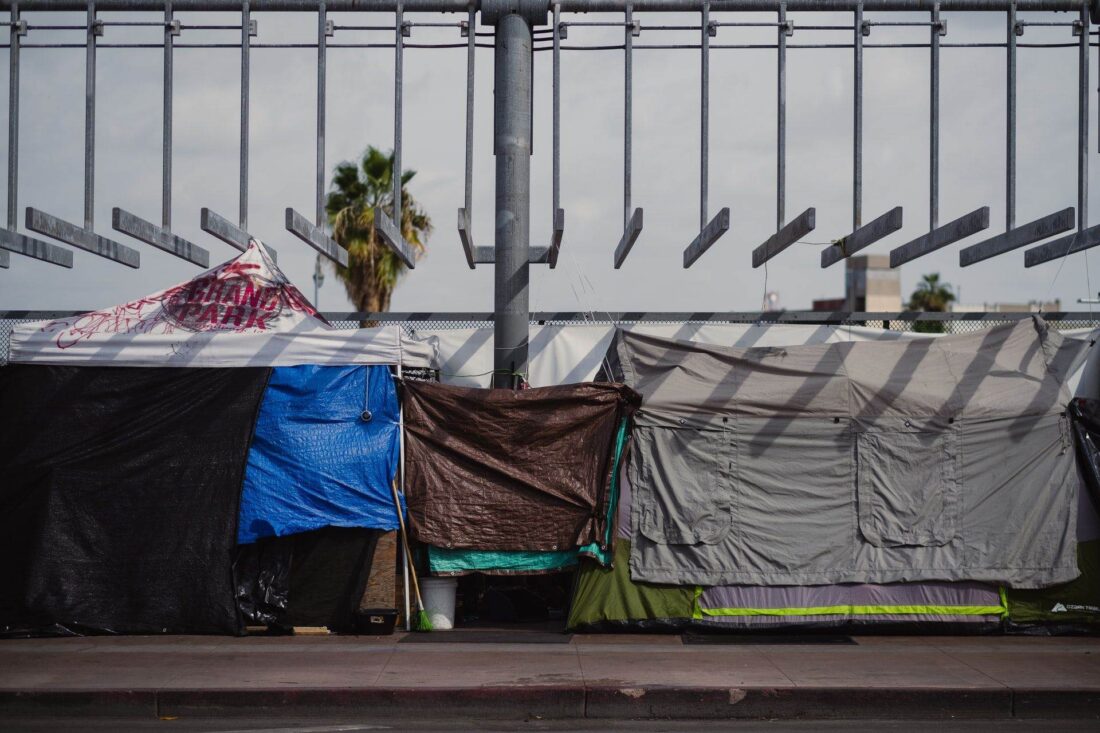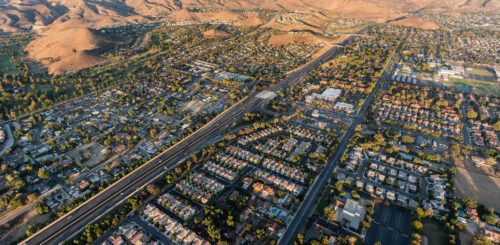If you are thinking about moving to San Francisco, know that there are plenty of things to do in this culturally diverse place. From job opportunities, excellent schools, to great restaurants, parks, and street art, you will simply enjoy living in The Golden City. Keep reading if you’ve been asking yourself—Why move to San Francisco?—and see why it was voted the healthiest and happiest place in the US numerous times.


Know the Cost of Living Before Moving to San Francisco
Before you start making your long-distance moving expenses checklist, you should know more about the cost of living in San Francisco. It’s not a secret that SF is one of the most expensive cities in the US. The cost of living index is 270, which is way higher than the national average. If you are moving from a small town to a big city like this one, be prepared to pay more for transportation, rent, utilities, and even groceries.
So, what salary do you need to live in San Francisco? It will depend on your needs and preferences, but to live comfortably, you’ll need at least $100,000 per year. The good thing about relocating to San Francisco is its job opportunities. You should be able to find work quickly, especially if you have in-demand skills. With a good job, you’ll be able to enjoy an expensive lifestyle.
How Much Money Should I Save to Move to San Francisco?
Have you been asking yourself this question — how much money should I save to move out of state? If you are moving to the Bay Area without a job, you should save at least six months of expenses. Since the place is costly, remember that such a sum should be around $25,000 to $30,000. If you are hiring a long-distance moving company or purchasing boxes and supplies, you’ll need to save up more. Know that cross-country moving services and packing will help you overcome the stress and fear of moving.
It’s All About Taxes When Relocating to San Francisco
When thinking about moving to San Francisco, California, know that you’ll be subjected to taxes. Wherever you live in California, you will pay state and federal taxes. SF is not an exception to that rule. If you are a homeowner, you will have to pay the tax based on the size and the location of the real estate. When purchasing a flat or a house, you will need to pay a real estate transfer tax. And there’s a sales tax of 8.5% which is added to many goods and services.


Should I Move to San Francisco? The Housing Market Is Very Competitive
Buying an apartment in SF and all through the Bay Area means you will have a place that won’t lose its value with time. But getting a house here means you need to move fast – properties stay on the market for no longer than 35 days. If you are moving in with a girlfriend or moving in with your boyfriend, both of you should dedicate time to house hunting.
When Moving to the Bay Area, Rent Prices Are Much Higher Than in Other US Cities
Due to the high real estate prices, many Franciscans rent, 65% to be exact. However, the rent prices are high and even more expensive than in NY. The cost to rent an apartment will depend on the location and its size. Rent for a one-bedroom apartment in the center is approximately $3,505 per month. For a residence of the same size outside of the center, you’ll need to pay $2,830 per month, which is still pretty high. If you are wondering how to move to San Francisco and pay less for apartment rent, consider finding a roommate.
Get Used to Homeless People When You Relocate to San Francisco
When you move to San Francisco, you’ll have to get used to many homeless people. This is something that anybody that has ever set foot in SF knows to be true. When walking back to your home from work, you will encounter homeless encampments along the sidewalks. The climate is a significant factor that attracts people without a home. The city’s mild weather is desirable for anyone living outside all year.


A Definite Pro of Moving to San Francisco, California: Public Transportation
If you decide to relocate to San Francisco, you’ll want to know your transportation options. Hiring auto transport services could be a good thing, but know that finding a parking spot is almost impossible. It would be better to rely on public transit since SF is one of the cities with the best public transportation in the state. You can use streetcars, buses, and underground trains to get around quickly. One-way tickets cost $3, while a monthly pass is about $82.
Moving to San Francisco Advice: Use a Bike
If you want to save up on the commute, you should ride a bike. The streets of SF are bike-friendly, so think twice if you planned to put your bicycle away in storage. Take it with you. It will come in handy on the days you wish to pedal across the town.
Pack Your Walking Shoes
Do you like to walk around, no matter where you go? Well, life in SF means good walking shoes. The place has more than fifty hills, meaning you will get a decent workout while walking around. Although cross-country moving services might come in handy while moving in.


Things to Know Before Moving to San Francisco – It’s A Hub for International Companies
You probably know that Golden City is a paradise for start-ups and tech companies, and many are global. Even though the tech sector is the dominant one, there are many other areas you can find work in. When you move, you’ll notice Twitter, Instagram, and LinkedIn offices at every corner. If you are wondering how to get a job in a new city, know that among the most paid ones are doctors, people in the IT sector, marketing, and financial managers. If you are long-distance moving for a job opportunity, remember that the job market increased in 2019. That, combined with a low unemployment rate of 2.7%, makes this place an excellent one for a job hunt.
Pick the Right Neighborhood
Feeling comfortable and happy in a new place starts with picking the right neighborhood. When you search for properties, finding the one that suits all of your needs will help you quickly adjust to a new environment. We have assembled a list of the best neighborhoods in San Francisco, to help you choose the one that you’ll feel most comfortable in:
- Castro District: This place is tightly connected to the LGBTQ culture, which is pretty apparent from its rainbow-painted crosswalks and many rainbow flags. This is a neighborhood with a busy nightlife and an upbeat vibe. If you are looking for a place to have fun, you just found it. Making friends in a new city here won’t be too difficult.
- Mission District: Around 15% of the city’s population is of Hispanic origin and they are mostly settled in this neighborhood. Mission District is painted with nearly 500 murals. Shops stock everything from pinatas to fresh groceries. People are friendly, so it will be pretty easy to meet your neighbors.
- Noe Valley: This neighborhood is family-oriented and one of the best places to live in San Francisco. This kid-friendly place has a farmers market, and it is perfect for playing outside with kids and animals. Therefore, if you are cross-country moving with dogs, Noe Valley is the place for you.
- SoMa: This is one of the largest neighborhoods in SF. SoMa is one of the best places to live in California for young adults because you can find trendy clubs, AT&T Park where the Giants play, and an assortment of warehouses.
- Hayes Valley: This place is famous among professionals. Hayes Valley is packed with boutiques and is within walking distance from other popular neighborhoods. SF is one of the most vegetarian-friendly cities, so it’s not a coincidence that areas like this one have many trendy restaurants that suit everybody’s needs.


Most Exceptional Education for Your Children
If you are long-distance moving with kids, you’ll be thrilled to know that your child’s education will be in good hands. When thinking about the things to know before moving to San Francisco, finding excellent schools for your children has to be on the list. The SF Unified School District is the seventh-largest in California and has more than 57,000 students. Apart from an excellent elementary school curriculum, your children will continue their education in San Francisco high schools that offer a high-quality education program. According to Niche, some of the best ones are Ulloa Elementary School, Lowell High School, and Ruth Asawa School of The Arts.


Living in the City by the Bay
The Golden City is a hub of excitement—from great restaurants, art scenes, to fantastic music venues. Whatever your needs are, you’ll find something. Take a look at our list of the things to do in San Francisco:
- Festivals: This place values community and organizes many annual events and festivals. Some of the biggest ones are the Pride Festival, Outside Lands, and How Weird Street Fair. Life here is anything but boring!
- Restaurants: It’s pretty easy to find the best restaurants in San Francisco that can satisfy even the pickiest eaters. The Golden City is also known as one of the best cities for vegans. However, make sure to eat out early, since restaurants close at 10 PM.
- Art and culture: Apart from the mural hunt, you can enjoy art in many museums. When you settle, be sure to visit the Museum of Modern Art or the fantastic Asian Art Museum.
- Outdoors: With pleasant temperatures year-round, you’ll get to explore the outdoors whenever you feel like it. The area offers many possibilities that include walking along the beaches and mountain hiking. And all this can be accomplished within a day!
Don’t Forget to Think About the Climate
SF is located in sunny California, but the weather is not that bright and warm year-round. Mild winters and dry summers are perfect descriptions of the city’s climate. Depending on where you choose to move, you will notice that the western part is often foggy. Keep a jacket or a hoodie close by, because it can get pretty cold.


Moving to San Francisco Tips
Relocating to a new place can be challenging and stressful, especially at the beginning. Some things you’ll have to experience on your own. Others that you can research will help you significantly to start your new life. Here’s our list of what to know before moving to San Francisco:
- If you are moving with pets, know that many shops and workplaces are dog-friendly;
- Obtain Clipper Card because it’s reloadable and you’ll get discounts on specific transportation systems;
- If you need to use a cab, be sure to call hours in advance;
- There are plenty of real estate scams that you can find online, so be sure to check the apartment in person before agreeing to rent;
- To avoid a long commute to work, consider renting an apartment that will be closer to your home;
- Unfortunately, earthquakes are frequent, and it is advised to have an emergency kit with you at all times. SF lies on seven fault lines, and scientists predict that “the big one” will happen within the next thirty years.

Why Should I Move to San Francisco?
Is San Francisco a good place to live? There are many great things you can experience if you move to Golden City. Its welcoming environment and open-mindedness, plenty of outdoor activities options, walking around the area, and mild weather, are all big pros. It is expensive, but with a good job (which you’ll be able to find quickly), life is pretty affordable. This place is excellent, and if the things mentioned above suit your needs and preferences, you should definitely contact reliable long-distance movers such as Long Distance USA Movers, and outline moving to San Francisco, California.
Frequently Asked Questions About Moving to San Francisco
What Are the Best Neighborhoods to Live in San Francisco?
SF has many great neighborhoods. Some of the most popular areas include the Marina District, North Beach, Cole Valley, Haight-Ashbury, Mission District, and Castro. Each neighborhood has unique benefits such as amazing restaurants and bars, vibrant nightlife, and plenty of outdoor activities. Depending on what you are looking for in a neighborhood, you can find something special in every part of SF.
How Is the Cost of Living in San Francisco?
The cost of living is quite high compared to other cities across the US. Housing in particular is expensive, with average rents hovering well above $3,000 per month depending on the neighborhood. Transportation and utilities are also relatively pricey due to SF’s location and climate. Groceries and goods tend to be more expensive than average as well. Overall, it can be difficult to make ends meet if you don’t have a good salary or multiple sources of income.
How Is the Job Market in San Francisco?
The job market is strong, with diverse career opportunities. The tech industry is booming, and many businesses are actively looking to hire new employees. The region also offers unique economic development incentives which make it an attractive prospect for job seekers. Additionally, the city’s cost of living is higher than the national average; however, wages tend to be higher too as a result. The city has a healthy mix of employment opportunities and should remain an excellent job market for years to come.
What Is the Traffic Like in San Francisco?
San Francisco is a busy city with generally heavy traffic. During rush hour, it can be difficult to get around due to the large number of vehicles on the roads and bridges. Congestion and delays are common, so plan accordingly when driving here.
How Is the Public Transportation System in San Francisco?
The public transportation system is reliable and comprehensive, with a variety of services that provide convenient access to the city’s many neighborhoods. It consists of buses, light rail, cable cars, streetcars, trolleys, and other forms of transportation. The system offers a number of routes for commuters throughout the greater Bay Area that are economical and efficient.
What Are Some of the Top Attractions in San Francisco?
Some of SF’s top attractions include the Golden Gate Bridge, Alcatraz Island, Chinatown, Fisherman’s Wharf, and the California Academy of Sciences. Other popular attractions are Cable Car rides through Nob Hill and Coit Tower overlooking San Francisco Bay. The city also offers a wide variety of art galleries and shopping venues that visitors can enjoy during their stay.
How Is the Weather in San Francisco?
The weather in San Francisco is generally mild and pleasant. It experiences dry, warm summers with temperatures typically between the mid-60s to low 70s Fahrenheit (18-22°C). Winters are generally cold and wet with temperatures ranging from the high 40s to 50s Fahrenheit (9-13°C). Fog is common throughout the year.
What Are Some of the Challenges of Living in San Francisco?
Some of the challenges of living in San Francisco include high rental costs, limited public transportation options, and steep hills. The city also faces issues such as air pollution and homeless populations. Additionally, due to its proximity to a fault line, residents have to be prepared for the possibility of earthquakes.
How Is the Housing Market in San Francisco?
The housing market is very competitive with high demand for available homes and limited inventory. The median home price is currently $1,323,600, with prices rising steadily each year due to the influx of buyers from the tech industry driving demand up. Rents are also increasing significantly as more people move to the city for its strong job market and desirable quality of life.
What Is the Best Way to Get Around San Francisco?
The best way to get around SF is by public transportation. The city has an extensive bus and light rail network that serves most of the major tourist attractions, including Fisherman’s Wharf, Union Square, Chinatown, and the Golden Gate Bridge. There are also plenty of ride-sharing services available throughout the city. Walking or biking are great options for exploring areas closer to your accommodation or for getting in some exercise while you sightsee!






